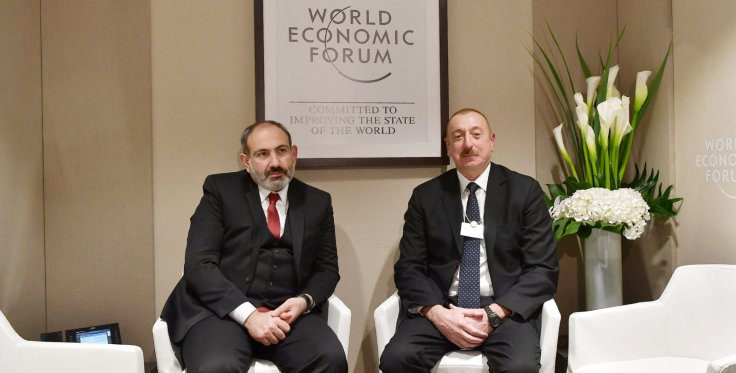Weeks after Azerbaijan and Armenia arrived at a Russia-brokered ceasefire, Azerbaijanis are groping in the dark over the number of the war dead. Even as new graves are dug and filled in the 'martyrs' alleys' of Azerbaijani capital Baku, relatives of soldiers who have not come back home after the battle are thronging government offices.
The authoritarian government of President Ilham Aliyev has not released full and transparent details of the soldiers who died in the 6-week battle with Armenia over Nagorno-Karabakh. RadioFreeAsia has reported that, according to unofficial admission, hundreds of Azerbaijani soldiers are still unaccounted for weeks after the ceasefire.

In capital Baku, families of missing soldiers are visiting hospitals where soldiers are treated, looking for their names on the lists displayed at hospitals. The Defense Ministry hotlines mostly routinely take down complaints from the callers and urge agonized family members to wait patiently.
The relatives of Yahya Abdinov, a 21-year-old soldier from the eastern Azerbaijani city of Shirvan, have already undergone several anxious days. "I was told by the [Defense Ministry] hotline that he wasn't among the injured," a cousin of the soldier told RFA.
"Everyone says different things ... One person says he's alive and doing his service, another says he's somewhere where there's no [mobile-phone] network so he can't make a call. We're lost. We can't get accurate information," the cousin, Saday Tagiyev, says.
Information flow is crippled under Aliyev's rule, which started in 2003. Critics are routinely jailed and free speech is curbed in the central Asian country. According to Reporters Without Borders, Azerbaijan is ranked 168th out of 180 countries in terms of press freedom.

The government's ruse is that the martial law declared on September 28, when the clashes began, is still in existence. "The Azerbaijani public will be informed of it after the completion of the active phase of military operations," Aliyev said.
Azerbaijanis remember that the same sort of confusion had prevailed after the 1994 war against Armenia. A state working group on prisoners of war, hostages, and missing persons had concluded that as many as 4,200 people were unaccounted for after the war. Azerbaijan was led by Heydar Aliyev, Ilham Aliyev's father, those days.
What's Nagorno-Karabakh Conflict?
Nagorno-Karabakh is a primarily ethnic Armenian region but it is situated in the territory of ex-Soviet Azerbaijan. As per international law Nagorno-Karabakh is part of Azerbaijan but the majority ethnic Armenians have established self-government with the support of Armenia. The ethnic Armenians are majority Christians, while Azerbaijan is mainly Muslim, giving the conflict a religious undertone and linking it to the Ottoman era oppression of Armenian Christians.
The 2020 Ceasefire
Under the ceasefire deal arrived at on November 10, territorial gains made by Azerbaijan in and around Nagorno-Karabakh were accepted by both sides, dealing a setback to Armenia. Ethnic Armenians were also mandated to give up more districts they held after the conflict in 1994 which left more than 30,000 people dead. As per the term of the ceasefire, Russian forces would remain in the region for at least five years, cementing Moscow's role in the region.









